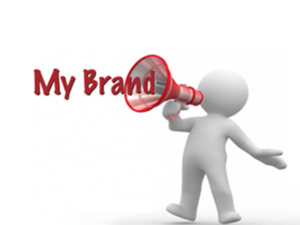Guest contributed by Jessica Thiefels

Image via Shutterstock
People love talking about themselves, and this is key to making the most of your next networking event. Instead of talking about yourself, ask questions and listen intently. If you can get someone talking about their work, business and goals, that’s half the battle—and it makes you look good because it shows that you’re not in a hurry to ask for something.
Keep these questions in your back pocket for your next networking event.
How Did You Hear About This Event?
This may seem like a cliché icebreaker, but the arbitrary question gives you, and whoever you’re talking to, a jumping off point. After you’ve made your initial introductions, ask your fellow attendee how they know the host or heard about the event.
If he or she knows the host personally, they may be able to share an anecdote or give you some additional insight about the person or organization. If they learned about the event from a peer or social network, you can see if you’re in any of the same online groups or talk about common professional interests. “The hardest part is breaking the ice,” according to Loraine Burger from Smart Meetings. “Conversation will, for the most part, flow naturally after that first painstaking ‘hello.’”
What do you love about what you do?
This is a more open-ended version and a better conversation starter than the usual, “So, what do you do?” When you ask someone what he or she loves about their job or role, it gives them the opportunity to talk about their passions and talents. If you’re trying to transition into a new field or a similar line of work, you’ll get an interesting perspective on the work. If you already work in a similar field, it gives you new insight into what someone else loves about the profession.
You may find some common ground or you may discover a new perspective. Either way, this question will excite the person more than simply asking their title or role.
Did you always know you wanted to get into this field?
Everyone has their own unique story about how they came to be in their current position. This question gives you insight into the path this individual took to get where they are now. Maybe they always knew they wanted to be in business or marketing, or maybe they started in a different field and transitioned into their current role because of a colleague or mentor.
Whatever their story, the questions allows you to learn from someone else’s experience. “This gives your new contact a chance to tell a story and people love telling stories, especially when the story is about themselves,” advises Thomas Camarda, networking expert.
Listen to what he or she says, they may tell you about mistakes they made that lead to a career change or resources they used to improve job-related skills. You may be able to relate or you may get some fresh ideas you can use in your own career. Not everyone has a straight career trajectory, and you can learn from steps others have taken.
What did you do to set yourself apart from other candidates?
It’s no secret that the job market is competitive. With so many applicants for any given position, you either need to do something special to stand out or know someone who can help you. Whether you’re talking to someone in a similar position or someone more advanced in their career (where you’d like to be), this question can help you learn what tactics have worked for other people and what it takes to get ahead. If you’re lucky, you’ll learn strategies that you wouldn’t have thought of on your own.
What can I do for you?
Finally, rather than asking for a favor, provide your new connection with the opportunity for your help as the conversation is ending. “When first meeting someone you think could be helpful, offer your services first,” says Ted Rollins, global ecopreneur recognized by Inc. 500.
Rollins continues,
“Ask: What do you need help with right now? What do you see yourself needing the most support with in the future? Being authentic with connections. Always trying to provide greater value makes them more likely to do the same for you. This sets the foundation for a strong network that is instrumental for everyone involved.”
If you know, based on their answers to your questions that you can help in a specific way, offer that. I.E. “I’d love to introduce you to John Smith, he was just promoted to CFO at Business Emporium; I bet he’d have a lot of great insight for you.” This shows you listened to them, heard what they need, and are willing to provide a solution or help.
Whether you’re talking to a peer or someone in a higher position, remember to be sincere. Don’t come right out and ask for a job or favor. You’re building relationships that may be able to help you in the future, but your goal shouldn’t be personal gain at your initial meeting. In many cases, the most valuable advantages you can gain from a networking relationship are insight and knowledge. Try these questions at your next event. You may find that they help the conversation flow more freely and make it easier to develop lasting professional relationships.
BIO: Jessica Thiefels has been writing for more than 10 years and is currently a full-time writer, content marketing consultant and business owner. She’s been featured in Forbes and Business Insider and has written for Manta, LeadPages, Salesforce and more. Follow her on Twitter @Jlsander07 and connect LinkedIn.
Disclaimer: The views and opinions of Guest contributors are not necessarily those of the glasshammer.com







